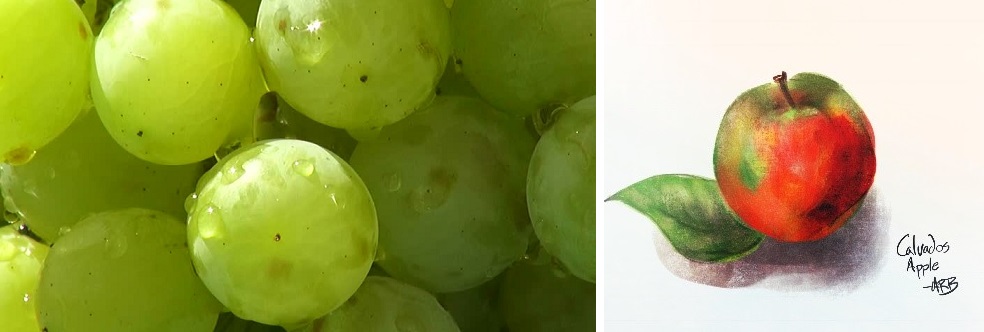
Cognac Begins with Grapes. Apples Become Calvados
Not All Grapes Become Wine
Have you ever considered an alternative path for grapes; one that leads to something other than wine? Are you ready to acknowledge that not all wine stays as wine, and some wines actually continue their production journey to become brandy…and a few very special grapes – are destined to become Cognac?
Only One Cognac
While Cognac is part of the brandy family, it has its own pedigree. The distinguishing characteristics can be found in the vineyards of the small French town that lends its name to this noted beverage: Cognac!
Cognac is located in the areas of Charente and Charente-Maritime where production is controlled by the French appellation DOC following a process and labeling requirements that are mandated by law. The specific and dominant grape used to make Cognac is Ugni blanc (aka Saint-Emilion and Trebbiano) and at least 90 percent of the grapes used must be grown in Cognac, if the Cognac brand is going to be affixed to the product; however, up to 10 percent can be from other grapes including Folignan, Jurancon blanc, Meslier St. Francois (or Blanc Rame), Select Montils or Semillon (if it is going to be CRU).
To be considered Cognac, the brandy must be distilled twice in copper pot stills and aged a minimum of 2-years in French oak barrels from Limousin or Troncais. Cognac matures in the same manner as whiskies and wines although Cognacs spend longer periods of time “on the wood” – beyond minimum legal requirements. After the distillation and during the aging process it is also known as eau de vie.
The age of the Cognac is calculated based on the youngest component used in the blend. The blending of different eaux de vie is important to produce complex flavors (compared to blending whiskey or non-vintage Champagne) – to achieve a consistent brand flavor.
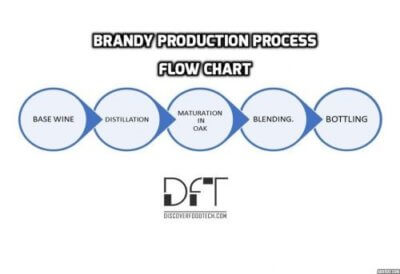
Harvest time in Cognac
- Once harvested, the grapes are made into wine in the traditional manner, resulting in a still wine intentionally low in alcohol (7-8 percent ABV) and high in acidity. While not drinkable at this point, it is perfect for distillation and ageing.
- The white wine is double distilled and turned into eau-de-vie (water of life), forming the base of Cognac. The process must take place between October 1 and March 31 – if the distilling process occurs after midnight on March 31, the product is unacceptable.
- Charentais copper pot stills are used for double distillation; each step takes a minimum of 12 hours, producing a crystal-clear liquid that is 70 percent alcohol by volume.
- Maturation begins as the eau di vie is poured into oak barrels to age and develop the basic color.
- Once a year the eau di vie is transferred from one barrel to another.
Older is Better
- Cognac is aged for a minimum of 2 years, but most are aged for longer time periods:
- VS (Very Special) – aged for at least 2 years in cask
- VSOP (Very Superior Old Pale) – aged for at least 4 years in cask
- XO (Extra Old) aka Napoleon – aged for a minimum of 6 years (recently increased to 10 years)
- Paradis – Other cognacs aged for longer periods of time and housed in special cellars.
- Hors d’age (Beyond Age). Equal to XO, but in practice, the term is used by producers to market high-quality product beyond the official age scales.
Drink More
Cognac sales increase yearly. The Bureau National Inter-Professional du Cognac (BNIC) reported that Cognac sales grew during the 12-month period (April 2017 – March 2018) by 10.3 percent. Approximately 200.8 million bottles of Cognac, valued at 3.162 billion Euros, were shipped from April 2017-March 2018.
The Business
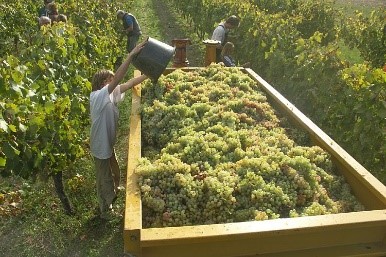
The Cognac vineyard encompass approximately 5000 grape growers producing white wine grapes for Cognac production. The Ugli Blanc, a late maturing variety with a good resistance to grey rot, produces a wine with two important features: high acidity level and a low alcohol content. Because of the phylloxera plague (19th century), all varieties have been grafted onto rootstocks according to the type of soil.
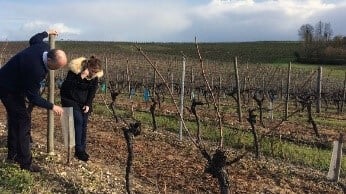
On average, the vines are separated by 3 meters with all types of pruning permitted, although the most common method is the Guyot Double. Some growers harvest by hand, while others find the use of harvesting machines convenient. Harvesting may start as soon as the grapes ripen, (beginning of October) and stop at the end of the month. Pressing and fermentation occur immediately after the harvest in traditional horizontal basked presses or pneumatic bladder presses.
Forbidden/Permitted
The use of continuous screw presses is forbidden. Chaptalization (addition of sugar) is forbidden by law. Pressing and fermentation are closely supervised as they have an influence on the final quality of the eau de vie.
More Rules
The time from wine to eau de vie is 4-8 days after the beginning of fermentation with approximately 9 percent alcohol making them perfect for distillation which must be completed by the following March 31 (at the very latest).
The Foundation is Cognac
Tired of Cognac? Time to explore:
- Grand Marnier. Cognac plus distilled essence of bitter orange.
- Pineau des Charentes. Sweet aperitif from eau de vie and grape must made in Charente region.
- Domaine de Canto. Cognac based on ginger liqueur.
- Chambord. Liqueur from cognac infused with black and red raspberries and Madagascar vanilla.
- Sidecar. (Originated in 1919 in The Ritz, Paris and The Savoy in London). Cocktail made with cognac, orange liqueur and lemon juice.
- Grappa. Italian, grape based brandy considered a “pomace brandy” – traditionally made from wine remaining from winemaking, after the grapes have been pressed.
- Piso. Clear Peruvian brandy made by fermenting white grape juice.
- Armagnac. Close to Cognac in taste and location; however, the real difference is “prestige.” The Cognac region is traditionally viewed as producing better spirits.
Apples at the Core
Calvados is a form or brandy made from apples (sometimes pears). The fruit must be grown in Normandy (northern France). Calvados starts life as apple cider and made by fermenting apples. It is then distilled and aged in oak casks and remains there for a minimum of 2 years (if it is to be classified as Calvados under the AOC).
Drinking Cognac (No right or wrong)
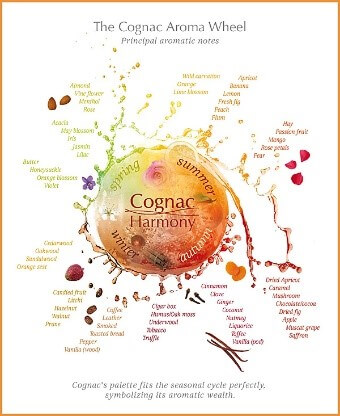
Brandy and Cognac are traditionally served in balloon snifters; however, today it is acceptable to sip them from “tulip” glasses. The serving temperature will impact on flavor with a colder Cognac offering dominate spices and barrel flavors while warm Cognac (warmed by the hand), will taste less of alcohol and be more fruit forward.
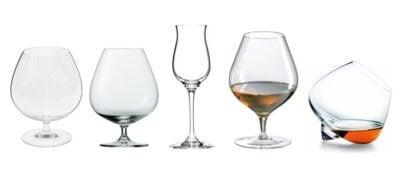
Searching the Depths of Cognac
- The View
The first attention to Cognac? Eyeball it! Look at the viscosity and clarity. As the glass approaches the nose, the scents are released.
- Aroma
A gentle rotation of the glass releases the essential perfume which may be highlighted with fruits and florals. Five main aromas are linked to Cognac: vanilla, prune, caramel, orange and apricot.
- Sip
With the first sip, the true value of Cognac is revealed. The combination of aromas and bouquet linked to its flavors is the life changing experience. On the palate – all the virtues of Cognac are revealed, including the roundness, smoothness, creaminess, refinement, lightness, harmony – and other memorable traits that make every drop a special occasion.
APVSA – Wine Event. May 2019

Pascal Fernand
The Association for the Promotion of Wines and Spirits in North America (APVSA) is based in Montreal, Canada. For almost 2 decades the organization has assisted European wines/spirits producers enter new North American market. The President of the Association, Pascal Fernand, organizes six tours each year in the USA, Canada and Europe. Unlike other New York wine events, the APVSA introduces wine buyers, scholars, writers and other wine/trade professionals to a small, selected group of high-end wine makers and producers, allowing time and space for the development of a dialogue and business relationship between the buyer and the seller.
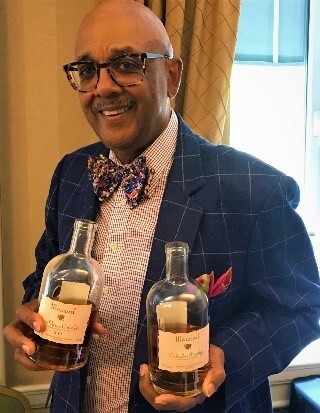
At the recent May 2019 event I was introduced to Jerry Cogen, President, Select Brands, the importer for Cognac Prunier, La Vielle Maison. The Prunier product line includes cognac, brandy, calvados, Armagnac, as well as anisette, mint liqueur, personalized brown spirits, aged rum and whiskies.
For 11 generations, the House of Prunier, one of the oldest cognac houses in the region, has followed the mantra, “…quality and respect of local traditions.” The essence of the Cognac is attributed to the “vines of the Charente and the Charente Maritime.”
The Prunier family started shipping cognacs at the beginning of the 18th century. Jean Prunier (1665-1732), was a freeman at the port of La Rochelle, the main shipping port for goods on the western coast of France. He was a noted cognac expert and had the foresight to observe shippers at the port and able to create connections with the traders in order to sell their wines and brandies.
Jean was succeeded by his son, Gabriel Prunier (1711 – 1790), and his grandson, Jean Prunier (1741-1843). They acquired vineyards near the town of St. Jean de Angely in the northern part of the Cognac region; however, it was up to Francois Prunier (1768-1843) to move to the town of Cognac where he lived by the Charente River (now the oldest house in the town), Maison de la Lieutenants (Sheriffs house).
Alphonse Prunier (died in 1918), was the last descendent of the Prunier family. It was her nephew, Jean Burnez, who was enlisted to run the business. It was then passed on to Claude Burnez and his sister. Since 2009, Stephane Burnez has directed the enterprise.
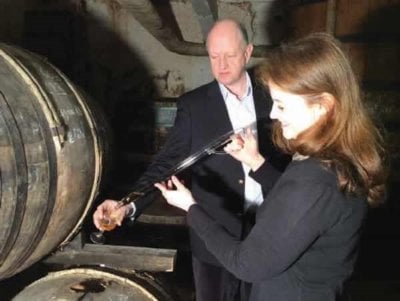
In 2016 his daughter, Alice, joined the organization, keeping the company in family hands for 11 generations
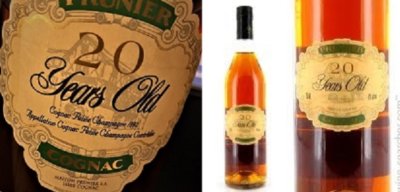
Prunier 20 Years Old Cognac
Distilled in 1992 from Cognac’s Petite Champagne appellation, it is still fresh and pure. Pale gold to the eye with hints of orange. The nose is delighted with suggestions of nuts, sandal wood, ginger and butter. The palate finds this Cognac mellow from suggestions of pears, lemon peel and ginger, delivering woody scents delicately imposed on the flavors of honey, dark chocolate and leather. Although aged in damp cellars for 20 years the finish is crisp and refreshing.
Cognac is versatile. It can be paired with Roquefort (strong and fatty), and Parmesan (aromatic and full-bodied) cheeses. It also works with oysters, lobster and salmon.
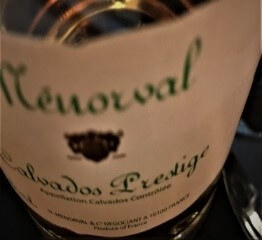
Menorval Calvados Presitige AC (Aged in oak barrels, 2-4 years)
The name, Calvados, may have been named after the man-of-war, El Calvador, a part of the Spanish Armada (it sank off the coast of Normandy in the 16th century).
Calvados (apple brandy), distilled from cider, just as cognac and armagnac are distilled from wine (appellation laws permit the use of a limited percentage of pears). A well-aged calvados is amber and gold to the eye, a melange of fruit and vanilla aromas delighting the nose, suggestions of apples – leads to an amazing palate experience.
Notes: Menorval Calvados: A blending of spirits from 2-4 years. Looks for fruity and balanced bouquet with dense apple aromas directed to the nose, combined with fresh pear and stone fruit fragrances. Light on wood.
Calvados can be enjoyed as an aperitif, with meals, as a cocktail or an after-dinner digestif. It pairs well with lobster, smoked salmon, leg of lamb, duck, and brie. It is a perfect match with all dishes using butter and cream. It also pairs well with apple tarts, ride pudding, crème brulee and tiramisu.

Menorval Calvados XO Tres Vieux Calvados
Fifteen-year-old Calvados delivers an aromatic complexity from combined scents of walnuts, hazelnuts and almonds as well as toffee with hints of baking spice. On the palate look for honey, cedar, lemon peel, and almonds. The interesting finish suggests nutmeg and cayenne. This is a smooth, creamy, light-hearted taste experience. Light on wood – considering it is 15 years old. Calvados can be added to coffee, served with apple sorbet, on the rocks as an aperitif, mixed in cocktails, with cheese and chocolate or in a flambé.
For additional information, click here.
© Dr. Elinor Garely. This copyright article, including photos, may not be reproduced without written permission from the author.
